You can link heat load calculation software with Building Information Modeling (BIM) for better HVAC design. This combo helps make heating, ventilation, and air conditioning systems more efficient and precise for buildings.
Using thermal load tools with BIM platforms like Autodesk Revit improves your HVAC design skills. It lets you model, analyze, and optimize HVAC designs in one place. This saves time and effort while making your work better.
Heat load software and BIM work together to make indoor spaces comfortable and green. You can improve system performance, increase energy efficiency, and lower costs. Let’s dive deeper into how this can change your HVAC design approach.
Understanding BIM and HVAC Load Modeling
BIM and HVAC Load Modeling are changing the construction world. They make building design and energy use more efficient and accurate.
Defining Building Information Modeling (BIM)
BIM is a digital way to show a building’s look and how it works. It’s not just 3D models. BIM also includes info on materials, systems, and how long things last.
The Importance of HVAC Load Modeling
HVAC Load Modeling is key for designing good heating and cooling systems. It looks at building size, climate, and how many people use it. This helps figure out the best HVAC size.
| Factor | Impact on HVAC Load |
|---|---|
| Building Size | Larger spaces need more heating and cooling |
| Climate | Hot or cold weather means more load |
| Occupancy | More people mean more cooling needed |
The Relationship Between BIM and HVAC Load Calculations
BIM and HVAC Load Modeling work together for better building design. BIM gives detailed info on the building. This info helps with HVAC load calculations. This makes energy use and system sizing more precise.
- BIM gives exact building sizes and materials
- HVAC modeling uses this info for load calculations
- This leads to a more efficient and cost-saving HVAC system
Using these technologies together helps make buildings strong, energy-efficient, and comfy for everyone inside.
The Evolution of HVAC Design Software
HVAC design software has evolved a lot over time. In the early days, engineers used paper and simple rules to design HVAC systems. This method was slow and often led to mistakes.
The 1980s brought a big change with CAD tools. These programs helped with load calculations but still needed a lot of manual work.
Later, energy analysis software became key in HVAC design. It let engineers test how buildings would perform and find ways to save energy. Combining CAD and energy analysis tools made HVAC design better.
Now, we’re seeing a big change with BIM integration. This uses 3-D models and analysis tools together. BIM has made HVAC design more efficient and precise.
| Era | Design Method | Key Features |
|---|---|---|
| Pre-1980s | Manual Calculations | Paper-based, rule-of-thumb processes |
| 1980s-1990s | Early CAD Tools | Computer-aided calculations, separate design and analysis |
| 2000s-2010s | Energy Analysis Software | Building performance simulation, energy optimization |
| Present | BIM Integration | 3-D modeling, integrated analysis, collaborative design |
The growth of HVAC design software has changed the industry a lot. Engineers now have powerful tools to make buildings more efficient and green. As technology keeps getting better, we’ll see even more new solutions.
Key Components of Efficient HVAC Design Using BIM
Building Information Modeling (BIM) makes HVAC design more efficient and accurate. It helps create systems that fit modern buildings well. Let’s look at what makes this work.
Gathering Project Information
First, you need to gather all project details. This includes building specs, climate info, how people will use the space, and energy goals. BIM puts all this info in one place for everyone to see during design.
Creating a Detailed 3D Model
3D modeling is key in BIM. You make a detailed digital model of the building, including its parts, rooms, and systems. This model lets you see the HVAC system in the building and spot problems before building starts.
Defining Thermal Zones
Thermal zoning is important for HVAC efficiency. With BIM, you can split the building into zones based on things like sunlight, how often it’s used, and its purpose. This way, each area gets the right heating and cooling, making it more comfortable and saving energy.
Performing Load Calculations
BIM software helps with detailed load calculations. It looks at building materials, how the building faces, and thermal zones to figure out heating and cooling needs. This method ensures HVAC systems are the right size, avoiding problems of being too big or too small.
Using these key parts of BIM in HVAC design makes for better, more affordable, and green building systems. Combining project info, 3D models, thermal zones, and load calculations leads to a complete approach that helps designers and building users.
Integrate Heat Load Software with BIM for HVAC Design
BIM Integration is changing the game in HVAC Design Workflow. By mixing Heat Load Software with Building Information Modeling, you get better HVAC systems. This combo makes data move smoothly from architectural models to energy analysis tools.
First, bring your BIM model into Heat Load Software. This software uses your model’s details to figure out space loads. It makes the process more precise and quicker than old ways.
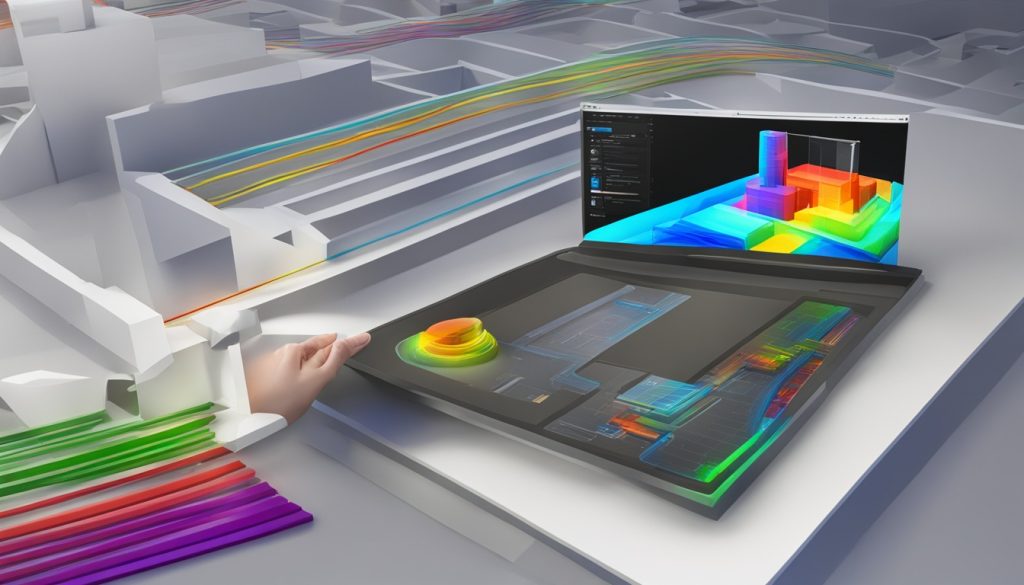
Platforms like Autodesk Revit have built-in energy analysis tools. These tools make analytical surfaces and spaces from your BIM model. This makes the HVAC Design Workflow smoother, cuts down on mistakes, and helps teams work better together.
Limitations and Considerations
Integrating Heat Load Software with BIM has many perks, but watch out for some downsides:
- Energy analytical model settings may need manual tweaks
- Internal gains loads might need fine-tuning
- Modeling plenums and various construction types in one space can be tough
To beat these hurdles, think about using HVAC design tools that work well with BIM. These tools give you more precise results and more design flexibility.
| Integration Feature | Benefit |
|---|---|
| Automatic geometry extraction | Reduces manual input errors |
| Real-time updates | Ensures consistency between models |
| Customizable load calculations | Adapts to specific project needs |
Mastering the blend of Heat Load Software with BIM can greatly enhance your HVAC Design Workflow. This method leads to more precise system sizing, less energy use, and better building performance.
Challenges in Integrating Heat Load Software with BIM
Integrating heat load software with Building Information Modeling (BIM) can be tough. You might face several BIM integration challenges as you try to make your HVAC design smoother. Let’s look at some common hurdles and how they affect your work.
Data Transfer Issues
Transferring data from BIM to heat load calculation software can be tricky. You might lose or corrupt information during this process. This can cause your HVAC system designs to be wrong.
Software Compatibility Concerns
Getting different software to work together smoothly is hard. Each platform has its own file formats and data structures. This can lead to losing some features or details when moving between programs. It can mess up the accuracy of your heat load calculations.
Workflow Disruptions
Adding heat load software to BIM can change how you work. You might need to change your design process to fit the new software, which could slow down your project. Making your workflow more efficient is key to using these new tools well.
| Challenge | Impact | Potential Solution |
|---|---|---|
| Data Transfer Issues | Inaccurate calculations | Use standardized file formats |
| Software Compatibility | Loss of design details | Choose compatible software suites |
| Workflow Disruptions | Project delays | Implement gradual integration |
By tackling these challenges, you can make your BIM integration better. This will also improve your HVAC design workflow. Remember, getting past these hurdles is important to use integrated heat load calculations and BIM fully.
Best Practices for Seamless Integration
For a smooth HVAC Design Workflow, it’s key to follow BIM Integration Best Practices. Here are some tips for integrating heat load software with BIM:
- Use BIM authoring tools with built-in analysis capabilities
- Ensure compatibility with third-party analysis software
- Maintain control over input data
- Modify analytical spaces as needed
- Perform “what-if” analyses
Software Interoperability is crucial for a successful integration. Pick tools that work together well and support data sharing. Know the limits of your software and use specialized HVAC load modeling software when needed.
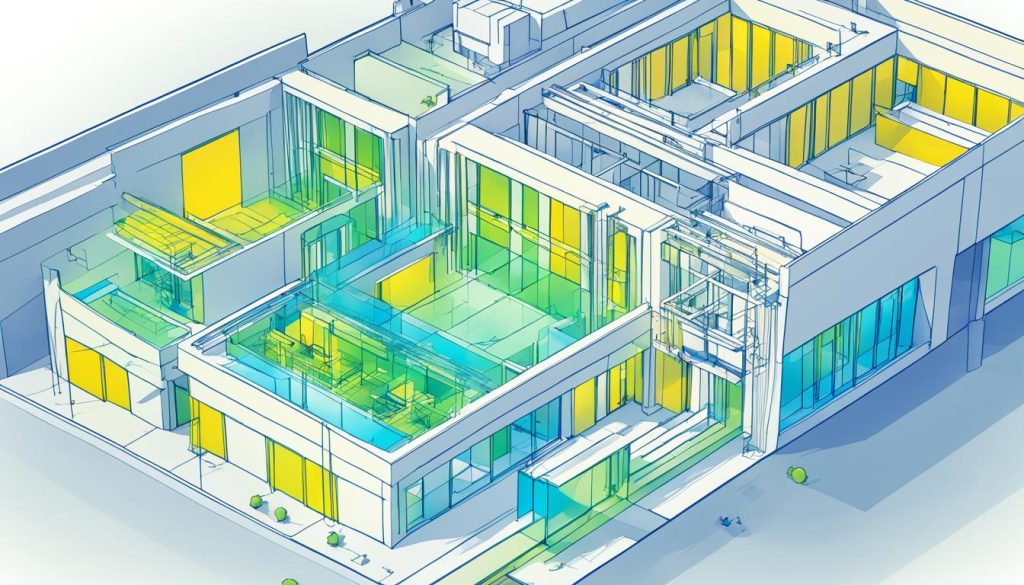
Effective Data Management is essential for a smooth HVAC design process. Create a centralized database for all project info. This way, all team members can access the latest data easily. This reduces mistakes and boosts teamwork.
| Integration Practice | Benefit |
|---|---|
| Use compatible software | Seamless data transfer |
| Centralize project data | Improved collaboration |
| Perform regular updates | Accurate design outcomes |
| Train team members | Enhanced workflow efficiency |
By following these best practices, you’ll make your HVAC design workflow better. You’ll get great results in your BIM-integrated projects.
Benefits of Integrated Heat Load Calculation and BIM
Combining heat load calculation with Building Information Modeling (BIM) has big advantages for HVAC design. It makes the process smoother, more accurate, and helps teams work better together.
Improved Accuracy in HVAC System Sizing
BIM makes HVAC system sizing more precise. Designers use 3D models to consider building shape, materials, and how the sun affects it. This leads to systems that are just right, saving energy and keeping people comfortable.
Enhanced Interdisciplinary Collaboration
BIM helps architects, engineers, and contractors work together better. Everyone uses the same, current model, cutting down on mistakes and misunderstandings. This way, updates are shared instantly, making solving problems easier.
Time and Cost Savings in Design Process
Using BIM with heat load calculations cuts down on design time and costs. Automation means less manual work, making it faster to test different ideas. This leads to quicker and smarter system designs.
| BIM Benefits | Impact on HVAC Design |
|---|---|
| Accurate 3D Modeling | Precise HVAC System Sizing |
| Centralized Data | Improved Interdisciplinary Collaboration |
| Automated Calculations | Increased Design Efficiency |
| Visual Analysis Tools | Better Decision Making |
By using BIM, HVAC designers get more accurate results, work better together, and design more efficiently. This approach saves time and money and makes building systems work better.
Future Trends in HVAC Design and BIM Integration
The future of HVAC design is changing fast, with BIM leading the way. You’ll see big changes in how HVAC systems are made, put into place, and kept up with new technologies and fresh ideas.
Advancements in software interoperability
Software that works well together is changing HVAC design. Soon, you’ll see easy sharing of data between BIM platforms and HVAC tools. This means updates in real time and working together better, cutting down on mistakes and data problems.
Artificial intelligence and machine learning applications
AI is set to change the HVAC industry. Expect smart systems that get to know how buildings are used and change HVAC settings to fit. These AI tools will use less energy, predict when things need fixing, and make systems work better.
Cloud-based collaborative platforms
Cloud Collaboration is making BIM better. You’ll get to use cloud platforms for working together in real time with architects, engineers, and contractors. These platforms make sharing info easy, keep track of changes, and let you access project data from anywhere, making HVAC design smoother.

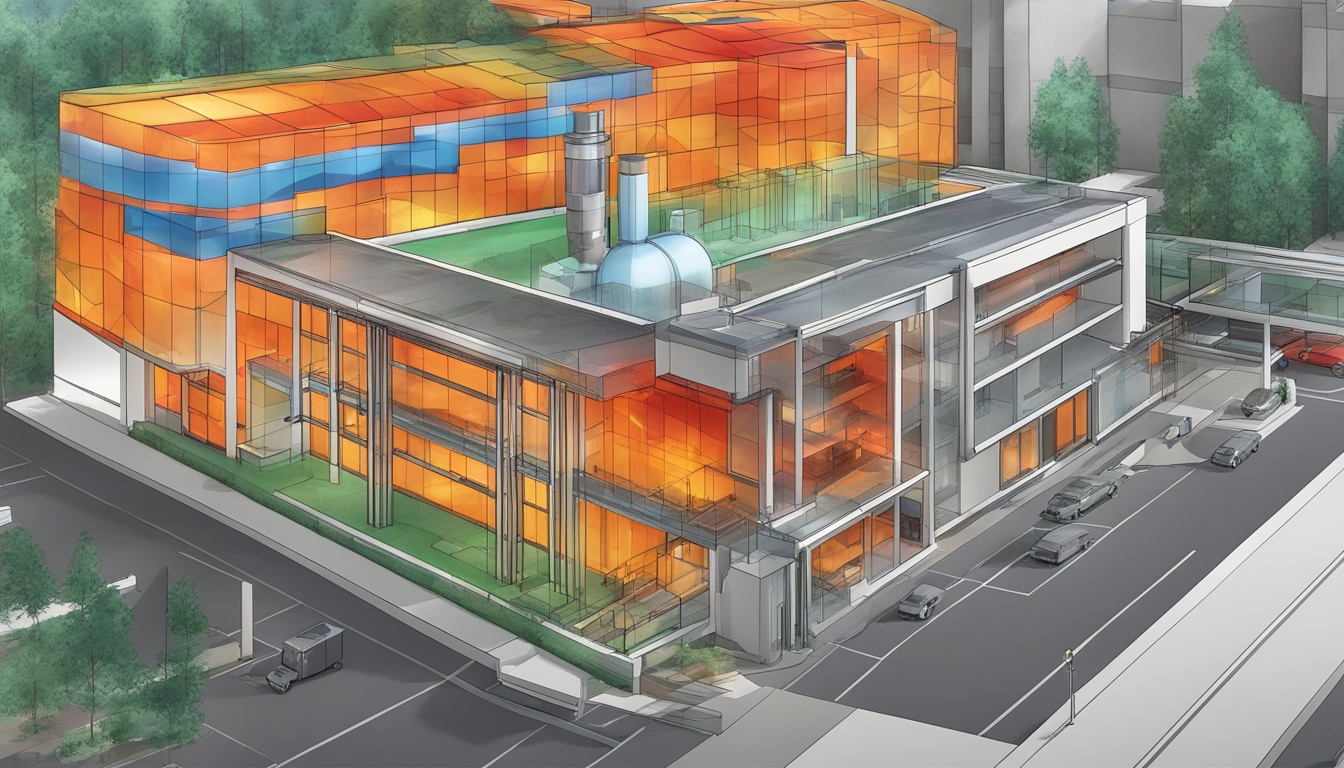

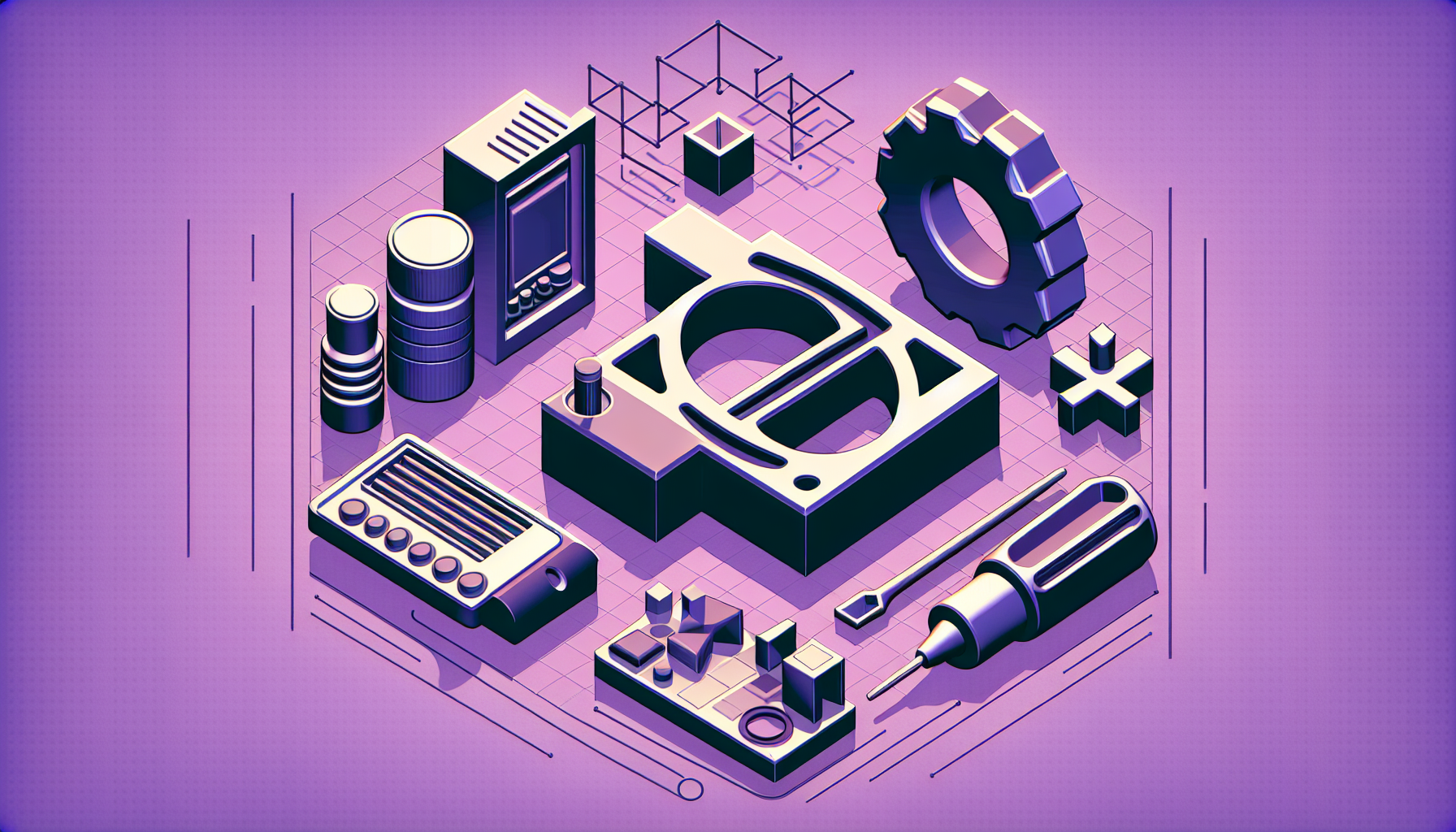
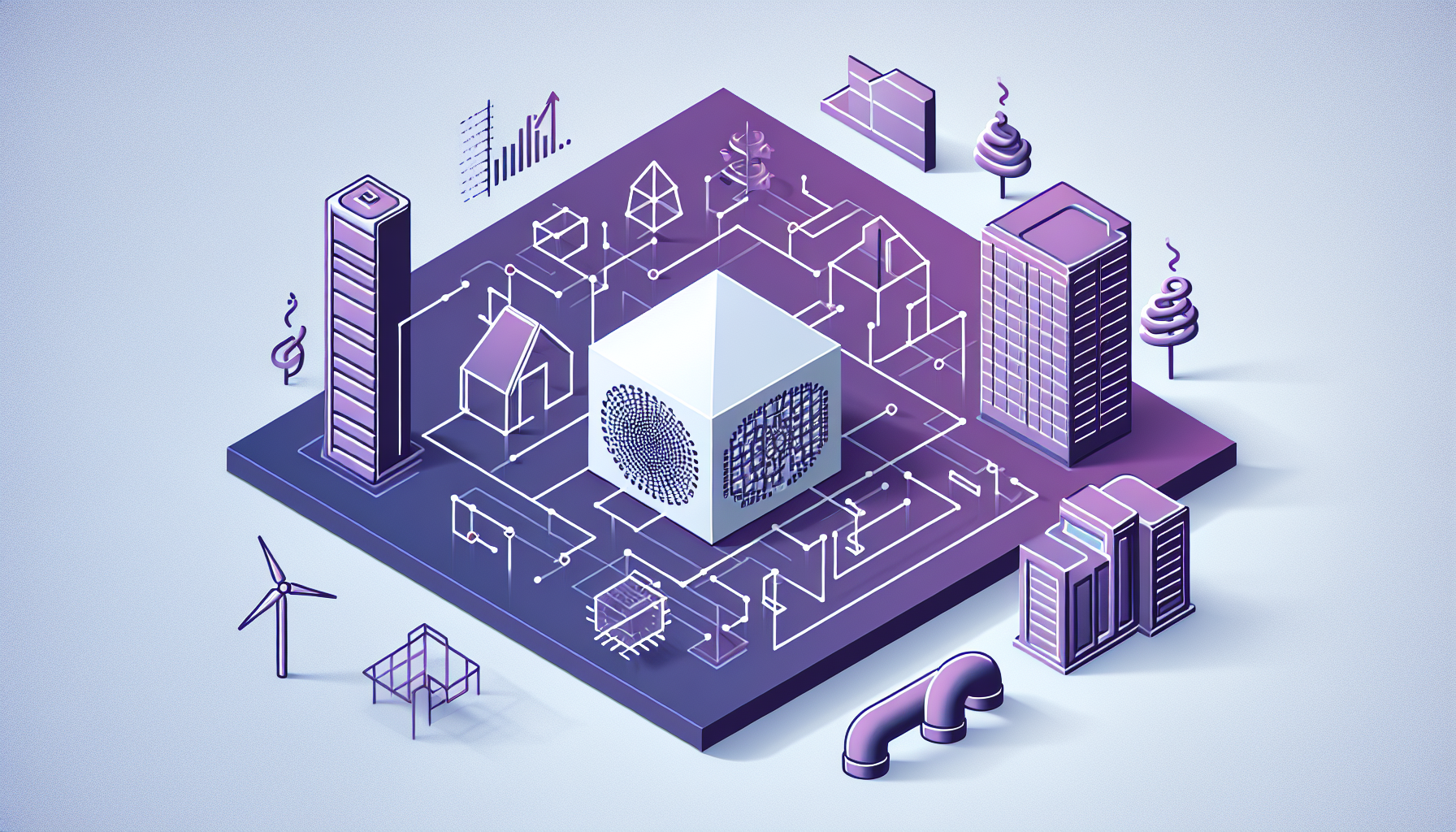
0 Comments